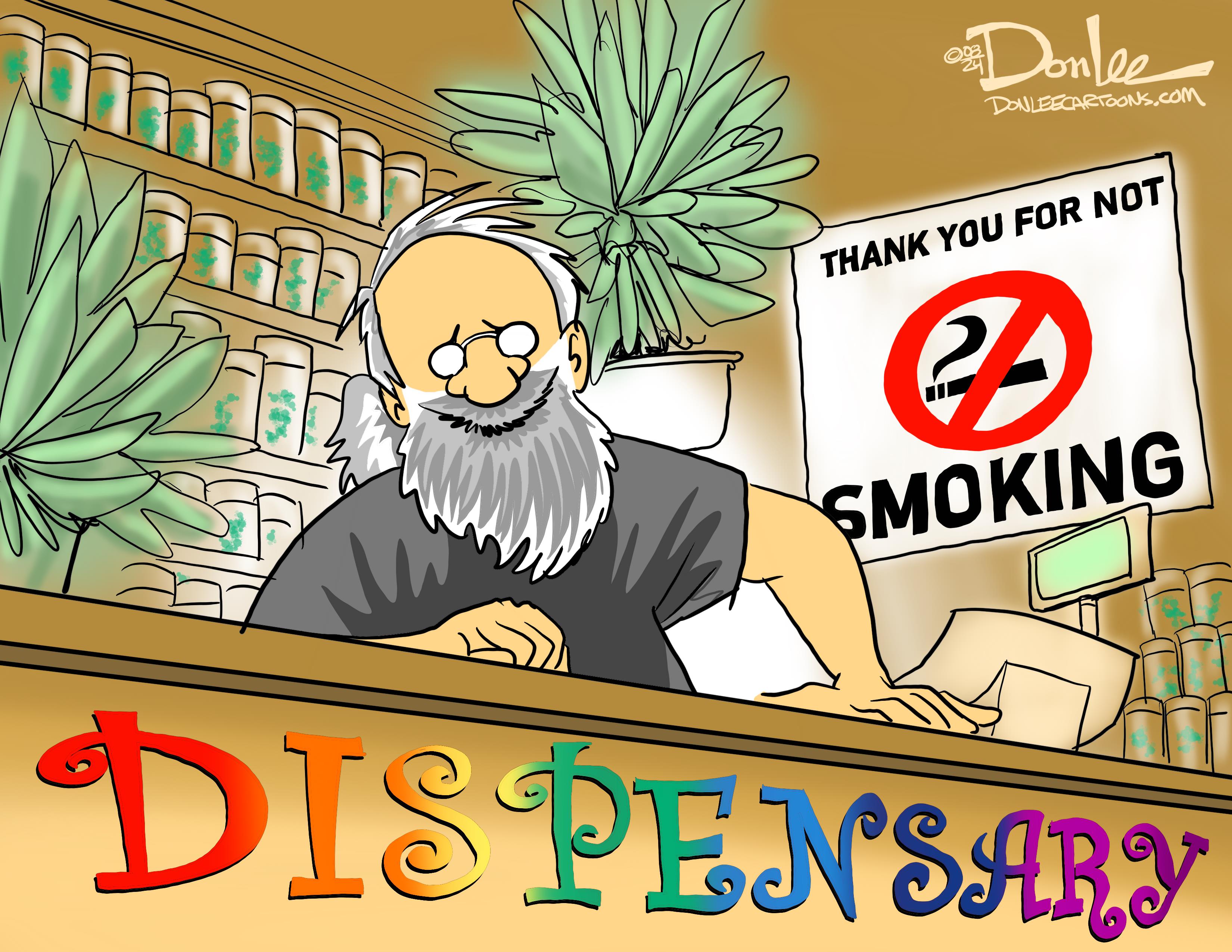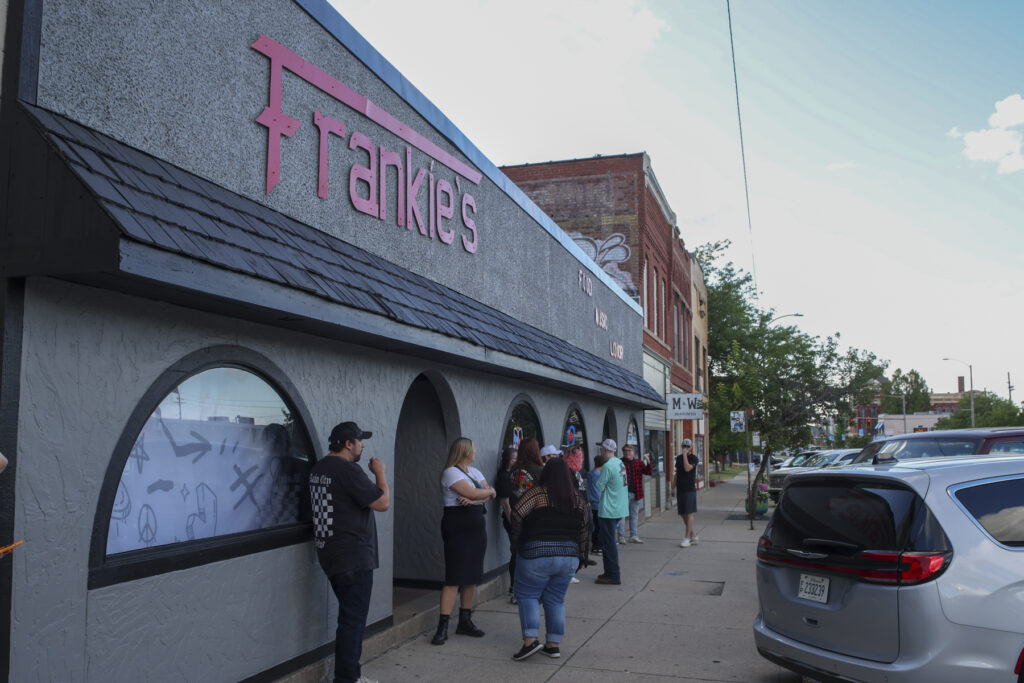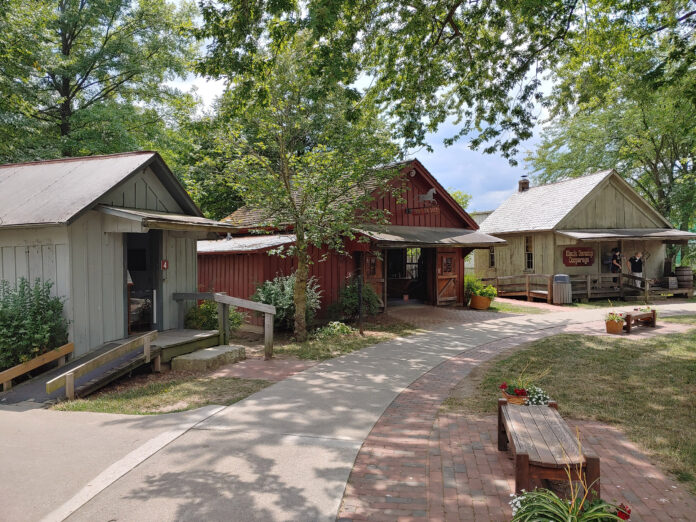Toledo Free Press 2.0 is live!
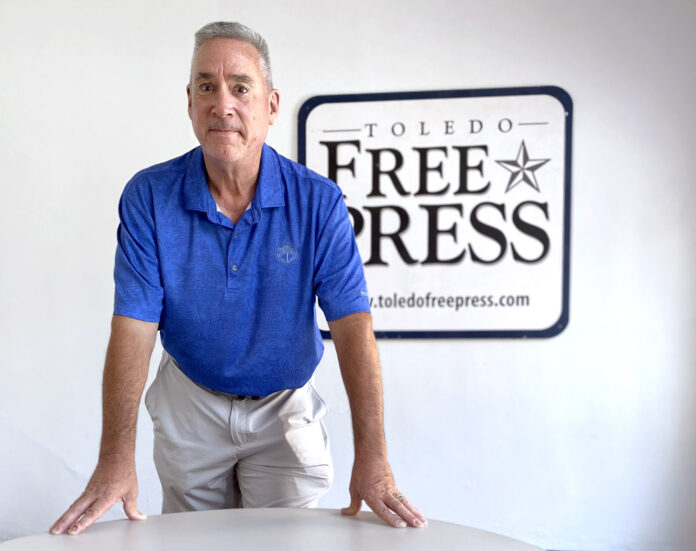

TFP founder and publisher Tom Pounds takes us on his 19-year journey
When I first began my newspaper career back in 1990, the newspaper (The Los Angeles Daily News) was inches thick. We used to call it the information miracle.
All those people were on staff to create, print and deliver the paper in less than six hours. It was the place to get your daily dose of news, sports and advertising. In fact, there was only one place where you could go to get a job, buy a car or a house or find a garage sale. It was a dominant medium that had few rivals. With all that advertising, you could fund plenty of reporters and editors and create a great newspaper.
Back in 1990, the newspapers also got into the web business and started putting their product online. This trend continued for a few years until the “bright” leaders of our industry decided that giving the content away on our websites was the way to go. This was a hard trick to give away content online and still expect to sell a hard copy on the street.
When I arrived in Toledo as the vice president and general manager at the Toledo Blade in 2000, we were facing struggling circulation numbers and advertising was starting to go the way of the internet.
You could buy cars and homes over the internet. E-Bay was booming, and Craigslist followed. The game was changing. In 2004 I left the Blade and started the Toledo Free Press as a free weekly that was home delivered, as well as available on newsstands free of charge. We were quite successful for many years (we lasted 10) before lawsuits and diminishing advertising finally put an end to that dream.
I tell people that if advertising was what we were really good at, we would still be in business. Unfortunately, that was not the case. What we were good at was journalism. Of the 10 years we were in print, we were named the “best weekly in Ohio” six of the 10 years we were in business (we were second place the other four) by the Society of Professional Journalists. That was the Pulitzer Prize for us.
What we have seen over the years was the eroding of funding in the industry, which, in turn, led to layoffs in newsrooms everywhere. Journalism was being destroyed day by day and year by year. Nowadays, you can buy or sell a car within hours of posting them on Facebook Marketplace. Newspapers and journalism were becoming less and less relevant.

The closing of the Free Press in 2015 (10 years to the day of starting) was a tough pill to swallow. I was out of the business for many years until a now-good friend, Sean Nestor, contacted me to see if I had the archives somewhere. His stance was that we were a newspaper of record in those 10 years, and they should be preserved.
I still owned the name Toledo Free Press and the URL for the website. It was just blank when you went to toledofreepress.com. That was in 2019. What we have done since is restore the archives (still working on that to make all articles searchable) and get the site back up. When that happened, people noticed. I started getting news tips and thought to myself “there is still a hunger for local journalism!”
With the Blade’s dwindling circulation numbers (was 230,000 for Sunday papers when I left and it is now around 30,000), Toledo was turning into a news desert. That prompted me and Sean to start thinking of funding ideas to bring the paper back online. We landed on the nonprofit model, where we could still sell advertising, but it won’t be the main source of revenue. Donations would.
So, we began the process to build an organization that could support this effort. About two years ago we created a board of directors – local people to help us navigate the ups and downs of nonprofit fundraising. Our board includes:
- Brandi Barhite, director of enrollment communications at Bowling Green State University and former Free Press writer who also helped train our interns
- Dr. Bailey Dick, assistant professor of journalism at Bowling Green State University and a former intern for the Toledo Free Press
- Dan Kimmet, retired executive at Eaton Corporation and a friend. He also serves with me on the Owens Community College Foundation Board
- Sean Nestor, a network engineer at Sauder Woodworking Co., activist and self-proclaimed journalism fan. He also serves on the Toledo Integrated Media Education board (our parent board) and is a writer as well
- Linda Stacy, retired from Owens Community College as a workforce development officer and special assistant to the president for community relations. She is also a grant writer and has nonprofit experience
This great group has helped us get to this point to relaunch the Toledo Free Press as a nonprofit, online and free newsroom with no pay walls. Our goal is to bring more quality journalism to Toledo and our surrounding communities.
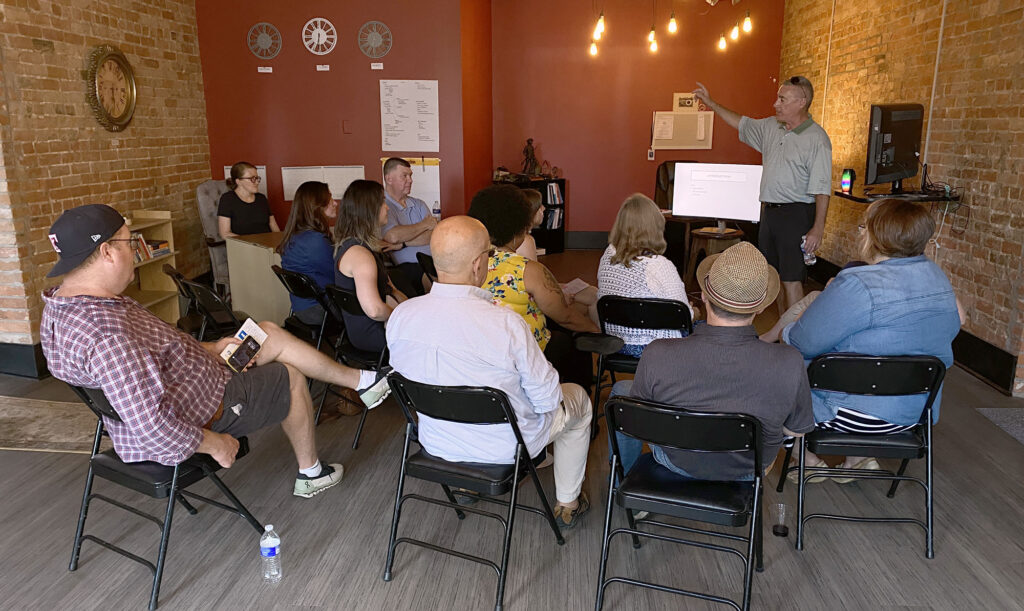

We will still have our “glass half full” attitude towards Toledo but will also do the investigative work and keep those in power accountable.
We will mentor and hire journalism to students from Bowling Green, the University of Toledo and Hillsdale College in our intern program. We will also look to incorporate area high schools in the area. We will be committed training future storytellers.
We will be transparent. The days of “sources close to say” are over (at least for us). We will also be nonpartisan. We will have an opinion section for the community to air their views, but we will not have our own. We will not endorse candidates but will give them the space to tell their stories.
We will also collaborate with funeral homes to offer free obituaries. We have a few now (Walker Funeral Homes and Coyle) and hope to get them all soon.
We want to be the place you go to find out anything in Toledo. Our agreement with WTOL as a news partner will also help us (and them) get the word out on stories that have high interest in the Toledo region.
Our goal is to create a quality newspaper you are used to. We want what’s best for Toledo, which is a great news source.
Please join us and become a member. Sign up to get our weekly newsletter and use the donate button to support us. We will be funded by our readers, grants and advertisers; that’s how this will work. We are delighted to be back and want you involved. Please keep reading us and support our team, if you can. This time, we will make history!
Is Toledo a sacrifice zone?
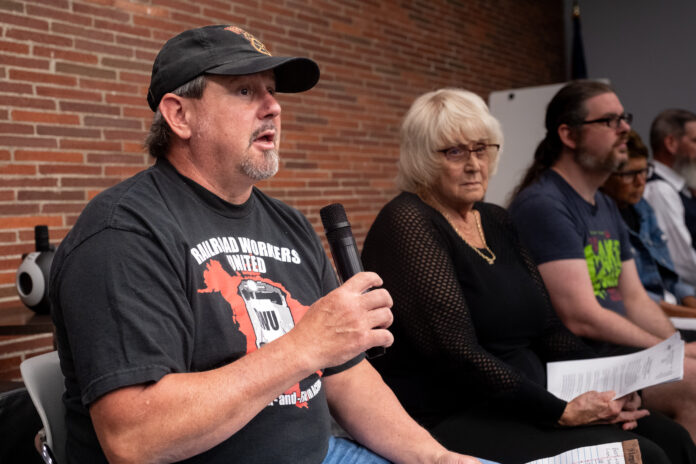

Conference on Corporate Caused Disasters targets unsafe water, train derailment
TOLEDO – It’s an anniversary few Toledoans will ever forget.
August 2, 2014: The day Toledoans woke up to warnings not to drink, bathe or cook with municipal drinking water. It was the day Toledoans came to understand just how devastating blue-green algal blooms in Lake Erie could be when toxic cyanobacteria contaminated the water supply for 400,000 human beings.
The algal bloom and undrinkable city water made national news—and not in a good way, either.
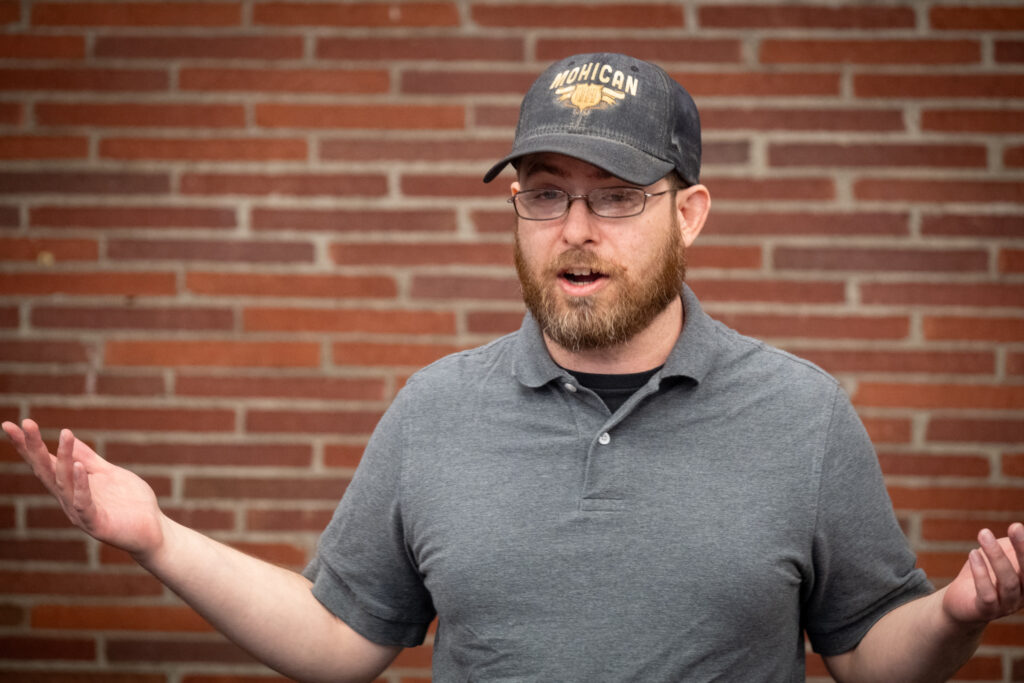

Ten years after the three-day water crisis, Mike Balonek, a Toledo filmmaker, crafted a short documentary about the challenges of blue-green algal blooms that still face the region. His film, The Big Problem in the Great Lakes, which premiered Aug. 3 at the Kent Branch Library, was part of the Conference on Corporate Caused Disasters, which he helped organize.
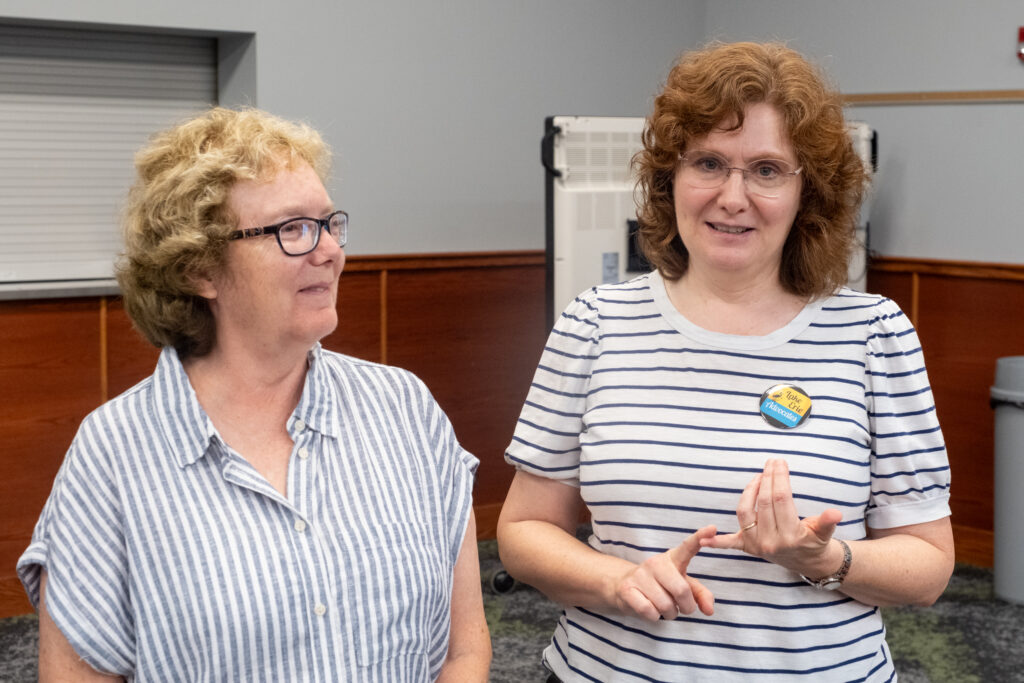

Balonek claimed he was never an organizer, but a filmmaker. The train derailment and burning of toxic chemicals in East Palestine, Ohio, last year motivated him to bring people from many different backgrounds together to discuss what they have in common.
“Everyone felt that now is a good time to start a movement, a movement where everyday people work together to protect themselves from the environmental harms that their local, state, or federal government won’t,” he said.
“If you live here (Toledo), you live in a sacrifice zone,” said Balonek. A sacrifice zone is defined as any area where you and your family’s health and safety are being sacrificed for corporate profits.
The documentary shows that there is little actual enforcement of environmental regulations when it comes to factory farms or Concentrated Animal Feed Operations (CAFOs). These factory farms, with thousands of beef cattle, dairy cows, pigs and chickens contained in relatively small areas, produce huge amounts of manure used as fertilizer on fields, causing massive run-offs of excess manure into local streams and rivers. Eventually all the phosphorus and nitrogen winds up in Lake Erie where an overabundance of these nutrients can cause large blue-green algal blooms.
There is little interest coming from the federal government about how these algal blooms can poison the drinking water for upwards of 11 million people living along the shores of Lake Erie in both the U.S. and Canada. Their attitude is that the people of the Great Lakes can take care of themselves.
Toledo mayor Wade Kapszukiewicz, interviewed in the documentary about the 2014 water crisis, said, “A single CAFO shouldn’t be approved going forward, but they’ve approved 50 new ones since then. The state continues to look the other way. The state uses Lake Erie as a toilet.”
There’s a lack of enforcement.
Sandusky County farmer Tony Ruffing
And with farmland selling for approximately $10,000 an acre in NW Ohio, according to Ruffing, more and more corporations/billionaires are buying it up. Small farmers who practice environmentally friendly farming cannot hope to compete unless laws and regulations are changed in their favor.
After the film showing, a panel of activists from Lake Erie Advocates (LEA), Toledoans for Safe Water, East Palestine and Piketon, Ohio, and San Francisco (via Zoom) gave testimony about the corporations that have caused environmental disasters in their areas, and how the people are fighting hard for recompensation and needed remediation of the toxins in their air, land and water. This includes the many decades-long fight for the removal of radioactive nuclear wastes left over from government projects in Piketon, Ohio and San Francisco.
It’s an uphill battle.
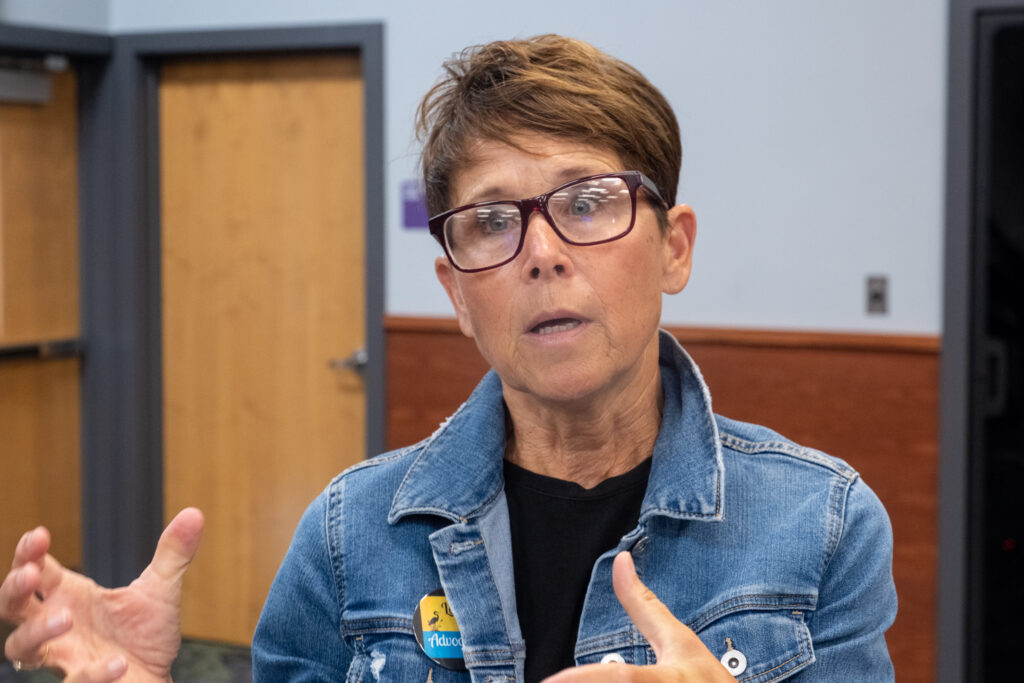

“CAFOs are not a sustainable industry,” LEA activist Kim Axe noted. The federal and state governments subsidize them to produce excess products such as milk, that sometimes later cannot be sold. The state of Ohio even pays farmers $60 an acre to spread the plentiful CAFO manure onto fields, but it doesn’t monitor how much is being used, leading to the excessive nutrient run-offs into the lake which causes the toxic algal blooms.
Most of the activists stressed how corporations and their lobbyists have tremendous influence over politicians and government agencies. Regulatory capture is real.
The Environmental Protection Agency (EPA) provides permits to corporations stating how much pollution they are allowed to dump into the environment and doesn’t always monitor what’s happening. The panelists felt that governments at all levels are abdicating protecting the public’s health and safety.
But there is unity in the community. Ohioans can come together and fight back against this corrupt system.
“Why is clean, safe drinking water controversial?” asked Toledo activist Sean Nestor. “Who could be opposed to clean water?”
“The voice of the people is muffled by the corporations,” added Matt Weaver, a Railroad Workers Union member who noted a pattern. “Regulations interfere with profits, the quest for shareholder happiness. You can’t trust an industry to self-regulate.”
Each of the panelists gave examples of how corporate farmers, railroad corporations and the nuclear industry have failed to self-regulate, and offered suggestions on what the public can do about it.
“Let the people know what’s happening,” said Chris Albright, a resident of East Palestine. Albright has suffered serious health issues caused by the toxins released into the air from the unnecessary burning of chemicals leaked from train cars after the derailment in February 2023.
The Stafford Act — a federal act that could designate East Palestine a disaster zone and give residents much needed health care and compensation for their homes lost to the pollutants— has yet to be signed by President Biden. Albright lost his job due to his health issues, as well as his good private health insurance. He worries about his children’s health.
It’s going to keep happening. It’s not if but when. They contaminated our town for profit … and our government doesn’t want to pay.
Chris Albright
The government hasn’t provided Stafford Act health care and compensation to the people of Toledo or Piketon, either. But Ohioans are working together to find out what risks there are to our health caused by blue-green algal blooms.
The University of Toledo, along with the Great Lakes Center for Fresh Waters and Human Health, are conducting a study into the effects of cyanobacteria aerosols that people who live, work or recreate near or on Lake Erie in Lucas, Sandusky, or Ottawa counties might have experienced. The film noted that aerosols have proven to be an even greater risk to the public’s health than simply ingesting water or sand that has become contaminated with blue-green algae.
The “GLAMR Study” (Great Lakes Aerosol Monitoring Research Study) needs participants. Call 419-383-6761 or email jennifer.gilmore@utoledo.edu for more information.
Full Disclosure: Sean Nestor is a board member of the Toledo Free Press.
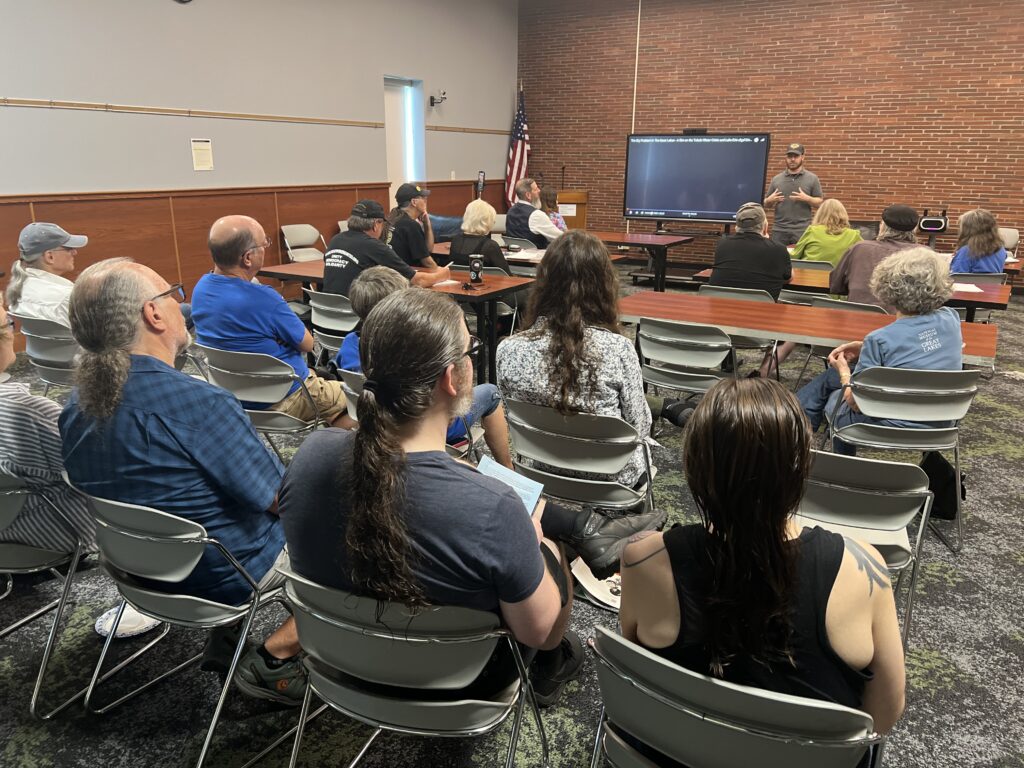

Cannabis adult use legal


Ohio leads revolution against federal prohibition
TOLEDO – Ohio begins recreational marijuana sales today, marking a significant shift in the state’s cannabis landscape following last November’s voter approval for adult-use cannabis. Dispensaries statewide are set to serve recreational consumers, including right here in Toledo and Bowling Green.
One of the dispensaries, Nectar Dispensary in Bowling Green, has spent the past two months preparing for this day by hiring and training staff and stocking up on a very extensive menu and back stock, according to Zachary Gergich, the store’s designated representative.
Gergich said he is expecting a big rush because “a lot of people are excited and have been waiting for this day, especially since it’s been almost 10 months since we we’re able to vote on it. People have been waiting for a while, and I definitely think there’s going to be a big push tomorrow.
“We’re making history … it’s going to be the first day of sales in Ohio for recreational customers I think a lot of people want to be part of history,” he said.
Nectar, which has been open for medical cannabis since March 2023 and receives its product from Ohio, currently has three Nectar stores in Ohio and three more on the way.
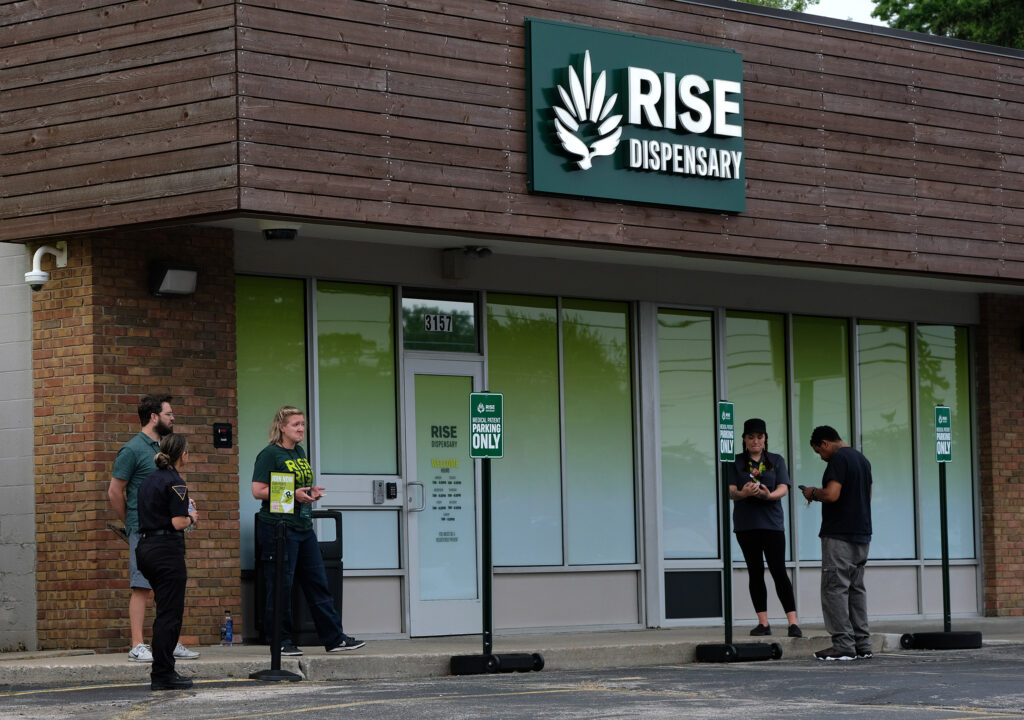

The legalization of cannabis in the United States represents a unique and historical chapter in human history. Unlike any previous prohibition, the shift from illegal to legal status for cannabis is characterized by a gradual, state-by-state approach rather than a sweeping federal mandate. This piecemeal legalization has allowed the U.S. to become a leader in cannabis innovation, positioning itself for global dominance in the burgeoning market.
The federal government’s decision to let states act as laboratories of democracy has fostered diverse legal and business models, driving significant advancements in cultivation, distribution and regulation.
According to Lenny Berry, founder and CEO of the Ohio Cannabis Health and Business Summit, “this is an historic mark for everybody who’s been fighting to legalize it and destigmatize the plant for patients who use it and have been shunned.


“I also think it gives consumers or people who were curious about the plant an opportunity to venture into the space or inquire about it without feeling a certain kind of way or needing a medical card,” he said.
“I just felt like there was a lot of misinformation while we were trying to pass legalization, and I always feel like the educated person is the best voter, because if you don’t know about the industry, you’ll feel apprehensive about putting your best foot forward to try to make it happen,” he explained.
“It’s a great way to celebrate being the 24th legal state, for us to hit that milestone and get across the finish line, especially when you’re talking about Ohio businesses losing to Michigan,” Berry said. “That was a big thing. The prices may not be as low as Michigan but I think now that we have a legal market, we will keep a lot of consumers here in the state, like tax dollars, job creation, and the list goes on.
In the grand scheme of things, I think the Ohio economy is going to get a major shot in the arm.
Lenny Berry,
Ohio, the 24th state to sell recreational cannabis, is part of a growing revolt against federal cannabis prohibition, joining other states in challenging outdated federal restrictions by establishing its own cannabis policies. This state-led movement underscores a broader shift towards recognizing cannabis as a legitimate economic and social asset. By legalizing cannabis, Ohio asserts its right to innovate and lead in this rapidly evolving industry, setting an example for other states to follow.
The new law allows adults to buy and possess up to 2.5 ounces (70 grams) of cannabis and to grow up to six plants per individual or 12 plants per household at home.
Cannabis is uniquely positioned as a product with both recreational and therapeutic applications, setting it apart from other substances. While alcohol commands a $1.6 trillion annual market, cannabis also taps into the pharmaceutical sector, particularly in areas like anti-inflammatory treatments.
The global market for anti-inflammatory drugs is substantial, valued at approximately $104 billion in 2022 and projected to grow significantly. Cannabis’s potential impact on these markets, though not entirely replacing them, could alter consumer choices and industry dynamics.
Ohio’s entry into the recreational cannabis market impacts local and regional economies, particularly border cities like Toledo and Detroit. Michigan has benefited significantly from Ohioans purchasing cannabis across state lines. According to New Frontier Data, Michigan’s cannabis sales reached over $3 billion in 2023, a 30 percent increase from 2022. However, the precise contribution of Ohioans to Michigan’s sales remains unclear.
Ohio’s legalization may also influence neighboring states like Kentucky, Indiana, Pennsylvania and West Virginia by encouraging policy changes and affecting local economies as residents travel to Ohio for cannabis purchases.


The legalization of recreational cannabis in Ohio could alter the flow of cannabis and related money across state lines. Ohioans who previously traveled to Michigan for cannabis may now spend locally, impacting Michigan’s sales and Ohio’s economic landscape. Additionally, changes in consumer behavior could influence the flow of cannabis-related money, as Ohio retains more revenue within its borders. This shift might prompt neighboring states to reconsider their cannabis policies to prevent economic losses.
Ohio’s medical cannabis sales in 2023 were $484.4 million, a slight one percent increase from 2022. The market faces challenges, including a decline in registered medical marijuana patients by nearly 8 percent since the November 2023 election. Ohioans spent over $700 million on cannabis in Michigan in 2023 due to lower prices and quality concerns in Ohio’s market. The anticipation of today’s recreational sales launch may also have affected the medical market.
New Frontier data forecasts Ohio’s marijuana sales to potentially hit $2.8 billion by 2030.
Ohio’s legalization of recreational marijuana sales marks a new era of economic opportunity and political discourse. By fostering a competitive environment and learning from states like Michigan, Ohio can position itself as a leader in the cannabis industry. With projections indicating significant growth, Ohio’s market dynamics and strategic policies will shape the future of cannabis legalization in the region and beyond.
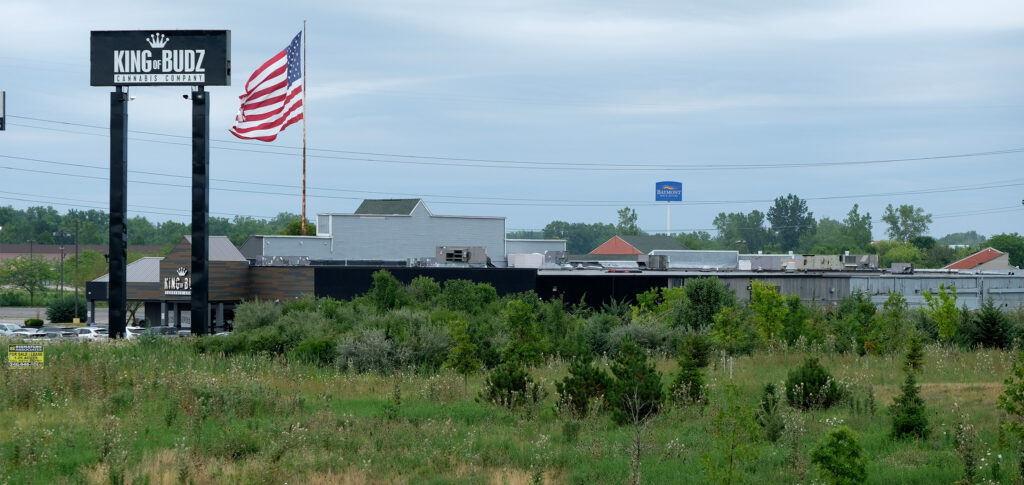

Daily Dose | The Humorist
Recreational cannabis now legal in Ohio
Museums for All in Toledo
Museum accessibility breaks income barriers for Toledoans
TOLEDO – If you can get a child interested in going to museums at a young age, you might just be instilling a habit that continually opens their worldview for the rest of their life. For some families on a tight budget, that doesn’t always seem like a viable option because of the cost of admission at many institutions. That’s where the Museums for All program comes in.
An initiative of the Institute of Museum and Library Services, Museums for All launched in 2014 to promote museum accessibility for food-insecure households. Officially, this means that households who receive SNAP benefits can present their EBT card and gain admission with a maximum of $3 per person, but most places will also accept a WIC card. It is a nationwide program that can be used across state lines.
There are five museums in the Toledo area who proudly participate in the program, and you can search for others through the Museums for All database. We did some digging about our local institutions, all of which accept both SNAP and WIC, to help Toledoans enjoy the savings. Visitors must bring one of these cards to receive the discount.
Visit Ohio’s War of 1812 battlefield, fort, and museum. Both self-guided and guided tours are enhanced by historic figures dressed in period clothing who all hold a wealth of knowledge about the site.
General admission regular price is $12 for adults, $10 for seniors, $7 for students, and free for kids aged five and under.
Museums for All discount: $1 for adults and free for those 18 and under. Must present Either WIC or SNAP cards are accepted to receive the discount.
National Museum of the Great Lakes
Marvel at the rich history of the Great Lakes region with a trip to this national museum. It features a fascinating documentary to begin your journey, followed by exhibits that explore everything from cruise ships to maritime technology. There are also many interactive exhibits for kids of all ages.
General museum admission regular price is $11 for adults; $10 for seniors, military and first responders; $8 for children aged 6-17; and free for kids aged five and under.
Regular price for those visiting the museum and touring the Schoonmaker and Ohio vessels: $17 for adults; $16 for seniors, military, and first responders; $14 for children aged 6-17; and free for kids aged five and under.
Museums for All discount: If touring only the museum, admission is free for all ages. If touring the museum and boats, visitors aged six and older pay $3 each.
Per their website, “Imagination Station believes that science is for everyone, and Museums for All is focused on removing financial barriers.” Regardless of income, all Lucas County children are admitted for free on Saturdays, so you can save even more money that day!
General admission regular price for Lucas county residents is $15 per adult, $14 for seniors, and $13 for children three and older. Kids under two are free. Non-residents of Lucas County pay $2 more for regular admission.
Museums for All discount: $3 each for up to eight visitors.
The Fulton County Historical Society oversees the museum that highlights the stories of Fulton County residents throughout the years that have shaped our region’s history. There are also special rotating exhibits and interactive features for all ages.
The regular price for general admission is $8 for visitors aged 16 and older, $7 for seniors, $3 for children aged 6-15, and free for those aged six and under. Also free for military and veterans.
Museums for All discount: $1 per visitor.
Step back in time at Sauder Village, where visitors can immerse themselves in the life of early 1800s settlers and Indigenous peoples to life on 1920s Main Street that features an old-timey soda shop and speakeasy with a secret entrance (Psst: it’s in the candy shop).
The regular price for general admission is $25 for adults, $23 for seniors, $19 for students aged 4-16, and free for kids aged three and under.
Museums for All discount: $3 per person up to 6 people.
These options are an easy drive from Toledo if you’re in an adventurous mood:
- Henry Ford and Greenfield Village
- Ford Rouge Factory Tour
- Arab American National Museum
- Outdoor Adventure Center
- Belle isle aquarium
- Museum of Contemporary Art Detroit (MOCAD)
- Michigan Science Center
- Ford Piquette Avenue Plant
- University of Michigan Museum of Art










